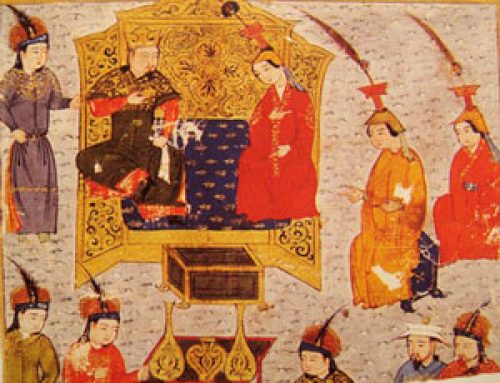
Grasslands of Central Asia – the steppe
In 1500 AD, most of Central Asia was grassland. Nomads rode horses and tended big herds of cattle there. Only in the western part of Central Asia were people farming wheat and barley and rye. But gradually over the course of the next 500 years, Russian rulers encouraged farmers to take over more and more of Central Asia, until they were farming a lot of the grassland.
At the same time, new inventions destroyed the traditional wealth of Central Asia from the Silk Road. The invention of new sails and new travel aids like compasses made it possible to sail in boats from Europe to India and China. Not very many traders wanted to cross the desert anymore.
About 1800 AD, traders brought potato plants from South America to Central Asia. People in Central Asia started to grow potatoes as an important part of their food. The invention of the cotton gin around the same time suddenly made cotton the most common cloth for clothing. The Russian government forced huge parts of Uzbekistan and other parts of Central Asia to start growing cotton in virtual slavery (just as the United States and Brazil did with African-American slavery).
Starting after the Russian Revolution in 1917, Russia started to use tractors and machinery to farm all over Central Asia. Instead of nearly everybody farming, today only about 15% of the people in Central Asia are farmers (while 70% of people in China and 72% of people in India are farmers, and about 2% of people in the United States). But people’s farms were collectivized – they belonged to the government. So most people worked on government farms.
The collapse of the Soviet Union at the end of that century meant that many of those farms came back under private control, but the situation remains complicated and messy. Meanwhile, very few people own the land they work on, and many are still subjected to forced labor in the cotton fields.
More about the Silk Road
Later Russian history
More about China’s economy
More about Safavid Iran
Bibliography and further reading about the Central Asian economy:




